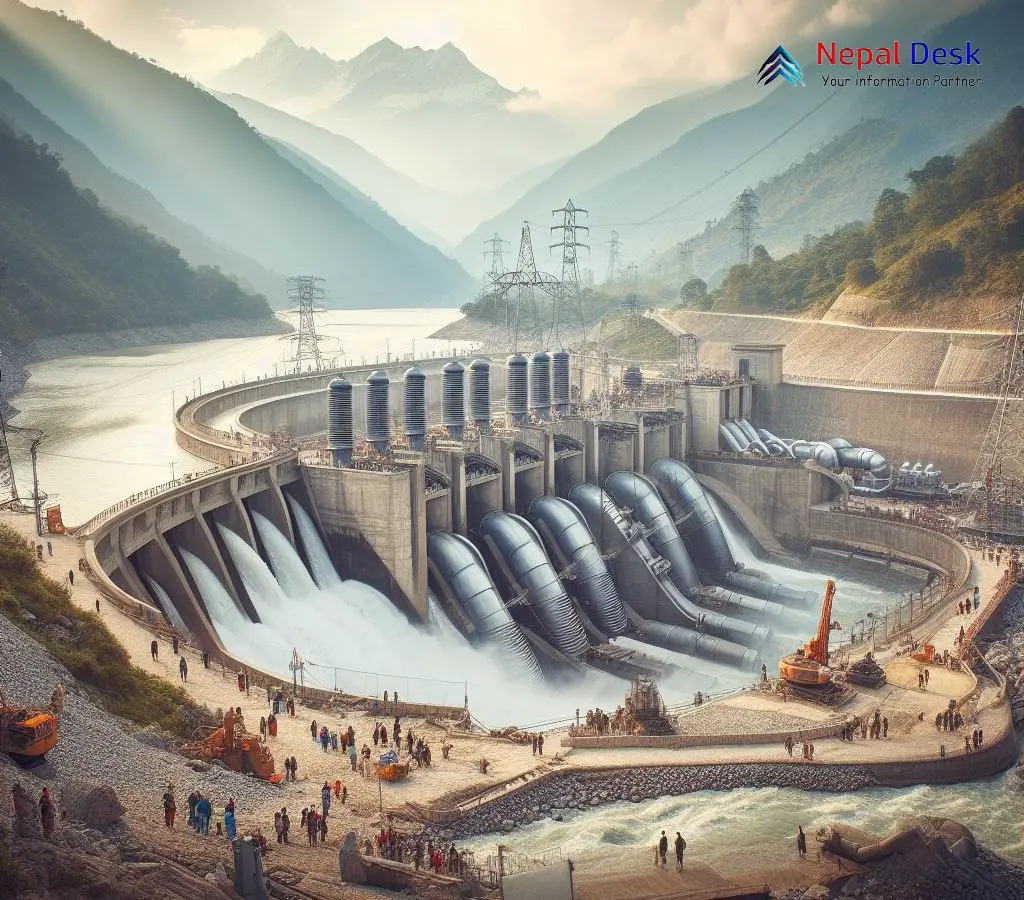Nepal-India Electricity Deal: A 10,000 Megawatt over a Decade
Published Date

Published Date
Nepal pledges to export 10,000 MW of electricity to India over the next decade, signifying a major step in regional energy cooperation.
⏱ 4 min read
On Thursday, Nepal and India finalized a significant electricity trade agreement, signifying a long-term commitment wherein Nepal pledges to export 10,000 megawatts of electricity to India over the next ten years. The official signing event was held in the presence of Nepal's Minister for Energy, Water Resources, and Irrigation, Shakti Bahadur Basnet.
Gopal Sigdel, a representative from the Ministry of Energy, Water Resources, and Irrigation in Nepal, and Pankaj Agrawal, India's Energy Secretary, signed the momentous accord.
As reported by the International Energy Agency, back in 2000, over four-fifths of Nepalis lacked access to electricity. However, a dam construction boom in subsequent years has successfully connected nearly all of the nation's 30 million residents to the electrical grid.
Nepal boasts an installed capacity of more than 2,600 megawatts from over 150 projects and is currently constructing an additional 200 projects.
Amrit Bahadur Rai, a spokesperson for the Nepali foreign ministry, confirmed the "long-term power trade" agreement during Indian Foreign Minister S. Jaishankar's visit to Kathmandu.
Although further details of the accord remain undisclosed, Ganesh Karki, president of the Independent Power Producers Association of Nepal, hailed the agreement as "historic."
Karki emphasized that it is now crucial for the government to focus on enacting legislation and fostering an environment conducive to supporting production on such a grand scale.
Specialists anticipate this agreement will attract additional investments to Nepal's hydropower sector.
"Details of the agreement may have to be worked out... but having a number will make investment more bankable," stated Sagar Prasai, co-author of a study concerning electricity trading in South Asia.
With abundant mountain river system resources, water-rich Nepal has significant energy production potential. Some studies estimate its total capacity at 72,000 megawatts—25 times the size of its current installed capacity.
Since late 2021, landlocked Nepal has already been exporting electricity to India on a smaller scale. Although heavily dependent on polluting coal to generate power, India has committed to achieving net-zero emissions by 2060.
Environmentalists have criticized Nepal's haste to exploit its hydropower potential, asserting that construction projects sometimes overlook environmental compliance safeguards. A draft ministerial proposal last year aimed at simplifying dam construction in protected nature reserves triggered concerns among conservationists.
Additionally, Nepal's hydropower projects face risks from floods and landslides prevalent in the country, both of which are intensifying in frequency and severity due to climate change.
Potentials of the Deal
- Economic Impact
- The deal can attract greater foreign investments into Nepal's hydropower sector leading to substantial GDP growth over the long run.
- It can open up significant revenue opportunities for Nepali independent power producers through steady export earnings.
- Increased energy production can aid the development of manufacturing industries creating employment opportunities.
- Social Impact
- The rise in hydroelectric projects can boost urbanization in rural hilly regions where dams are constructed providing access to power.
- Proper implementation can ensure affordable and reliable electricity access to remote areas powering socio-economic growth.
- Environmental Impact
- The agreement can accelerate Nepal's clean energy transition as it scales up renewable hydro-electricity reducing dependency on fossil fuels.
- Sustainable models need to be adopted ensuring new hydro projects adhere to environmental assessment protocols before clearance.
- Geopolitical Impact
- The deal will strengthen energy interdependence between Nepal and India through a symbiotic partnership.
- It can mitigate risks of exploitation from regional influences by contractual assurance over long-term electricity exports.
Risks Associated with the Deal
- Environmental Risks
- Rapid uncontrolled expansion of dams can undermine ecological preservation efforts by encroaching into forest lands and protected conservation areas.
- Increased construction activities can drive deforestation, soil erosion, and waste dumping in water bodies damaging local ecosystems and aquatic life habitats.
- Hydropower projects are prone to natural disasters like floods, and landslides that are intensifying due to climate change-related events, putting investments at risk.
- Socio-economic Risks
- Displacement of indigenous communities likely without adequate compensation or rehabilitation policies, further marginalizing their vulnerable groups.
- Lopsided power purchase agreements can limit financial returns for Nepal if export tariffs and quotas remain restrictive. Energy dependency on India may rise.
- Failure of hydro companies to ensure equitable employment opportunities and distribution of revenue proceeds from electricity exports can widen regional inequalities if hilly areas remain undeveloped.
- Geopolitical Risks
- Undue external interference in domestic policy matters related to natural resources regulation without factoring ground realities.
- Diplomatic tensions may exacerbate if bilateral commitments regarding the shared energy sector are not respected by parties.
Therefore, a balanced cost-benefit evaluation of mega hydro-projects requires considering sustainability, mitigating risks through community participation, and ensuring national priorities are not compromised while envisioning environmental principles during the complete project lifecycle under this ambitious agreement.
